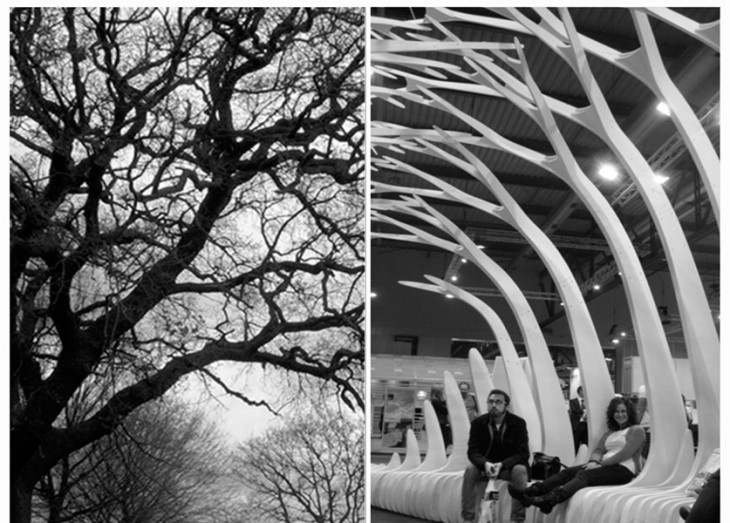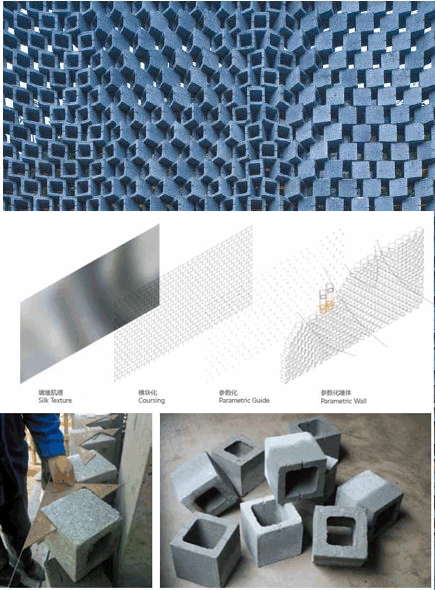
Fractal Forest (‘Monalisa’) Pavillion: Made Expo2012, Milan
Patrick Schumaker – Parametricism A new Global Tyle of Architecture and Urban Design
Schumaker explains his theory on Parametricism as a new style. Based on the notion that a style is recognized as the convergence of research and approach to architecture done by several architects over the las two decades. In saying this, he supports his theory with a set of dogmas that rule over Parametric Style as well as 5 agendas of research. Out of these, what stands out is his ruling out of rigid primitives, the parametric manipulation of geometries, interaction of several systems, complex figurations, project responsiveness, and relationaity in urbanism. He defends the aesthetic quality of projects done by new software and parametric methods as minimal path systems and the like.
As much as I believe that parametricism is a new style, I think the reasons and explanation of this theory by Schumaker is vague and superficial. When compared to work done by other authors as Neil Leach or the origins of parametric in works by D’Arcy Thompson and Deleuze. Schumaker is lacking structure in his theory, a base to support his hypothesis. Examples of this is the fact that he doesn’t give examples in which parameters have been used, how parameters are extracted, what is the process of design, and the role of digital tools and digital fabrication in parametrics.
To complete this theory I would like to mention other texts which support and give body to this structure. In terms of parameter extraction and manipulation to create form, Thompson’s work in “Growth of Form” explains it magnificently. The use of mathematical models and observation to see how a biological being change shape by the modification of parameters explained by the mathematical models. He extract the parameters that control shape and them manipulates them to create new shapes. In addition to parameter extraction, the work by Stephen Johnson in “Emerge”, explores swarms and new ways of object interaction. As a decentralized model where individuals make up the whole, where the part knows only a simple set of behaviors yet put together make the whole work in unison.
In terms of process, the work of Deleuze and Delanda in “Rhizome” and “Deleuze and the Genesis of Form” respectively, clearly point out to a new process or approach. They turn the way of designing from top-down to down-top, making the detail complete the whole. The idea of a basic object or parameter, call it morpheme, replicates and joins itself to create something bigger or modifies parameters to fit to different situations.
As for aesthetics and the role of digital tools and fabrication, Niel Leach and Nicholas Negroponte have a better explanation to how they influence the style. In “Architecture Machines”, Negroponte describes the evolution of machines (also applicable to software) on how they can achieve learning architecture. This evolution let’s use this machines for more detailed designs as well as design inputs and analysis, which in turn gives a richer project and parametric manipulation. Neil Leach in “Fabricating the Future” on the other hand, explains the role of digital tools and fabrication as an aid in the approach to architecture, a new thinking process which involves trial and error as well as deep analysis of parameters. A more precise description of the role of this technologies. Also in this book, Leach counters Schumakers dogmas on primitives and parametric manipulation for figuration by defining the aesthetics of the style not as a result of parameter manipulation and algorithms, but as a negotiation and restriction of the visual opulence of these compositions as an operation that entails elegance.
In general, Shumakers´ text is hiding the lack of information and substantial background examples behind a clever play of words by saying that a style is defined by the common interest of a certain field. His dogmas, as any dogma, is too harsh and doesn’t let the richness of parametrics develop its true potential and value. All in all, in is not a good example of parametricism as a style and can lead to confusion and disregarding of it as such.
It would be interesting to explore and research the nature of the parameters being manipulated in parametricism as well as how the new technologies are being used and what design processes it is bringing forth.



